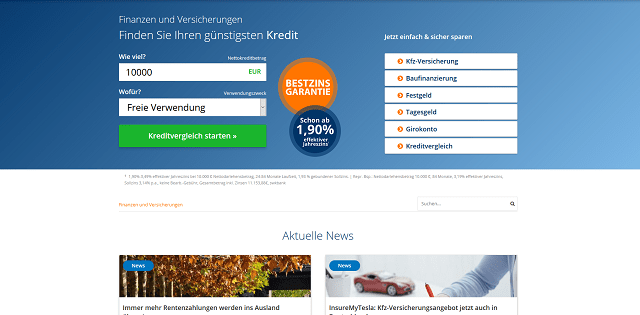Inside the world of food packaging. Learn about the specifics of the profession and career opportunities in this information overview.
Food packing connects agriculture, manufacturing, and logistics into one continuous system. Without the efforts of packaging teams, even the most advanced production lines would not reach customers safely or efficiently. This field combines technical precision with responsibility, making it one of the most stable and reliable employment areas in modern industry.

Food packaging sits at the intersection of food safety, manufacturing, and logistics. It is the final checkpoint that helps ensure products meet quality standards before reaching stores and homes. While machinery does much of the heavy lifting, people keep lines running smoothly, verify standards, and intervene when conditions change. From weighing and sealing to labeling and documentation, the role requires close attention to detail and a consistent commitment to hygiene.
The Role and Responsibilities of Food Packers
Food packers prepare containers, load products, monitor filling or wrapping, and seal units to prevent leaks or contamination. They add labels and codes for traceability, verify weights and counts, and remove any items that do not meet specifications. Regular visual checks, basic measurements, and quick adjustments help maintain quality while keeping throughput steady. Documentation supports audits and recalls, so accurate records are essential.
Sanitation and food safety practices are built into every step. Workers follow handwashing and glove rules, use protective gear, and respect allergen controls and temperature limits. They also assist with line changeovers, replenish materials like film and trays, and communicate issues to machine operators or supervisors. Many teams use checklists and standard work to reduce errors and minimize waste.
The Human Element: Teamwork and Purpose
Despite automation, the human element remains central. Packers coordinate with machine operators, quality teams, and sanitation crews to meet production targets without compromising safety. Clear communication during handovers, especially across shifts, keeps everyone aligned on what needs attention next.
The purpose behind the work is tangible. Getting nutritious, safe products into communities depends on reliable packaging. Pride in consistency, fairness in task rotation, and attention to ergonomics contribute to a healthy culture. Inclusive teams that share tips, rotate positions to reduce strain, and support learning tend to prevent errors and improve morale.
Entry Opportunities and Professional Development
Packaging often welcomes newcomers, with structured training that covers hygiene, good manufacturing practices, and hazard awareness. Many workplaces offer short modules on topics like allergen control, product identification, and safe material handling. New hires usually start with supervised tasks, then progress to more complex activities as confidence grows.
Career paths can branch in several directions. With experience, individuals may become line leaders, quality technicians, machine operators, or inventory coordinators. Others develop expertise in sanitation, maintenance support, or health and safety. Progress typically reflects reliability, communication skills, and comfort with checklists, data capture, and basic digital tools. Micro learning, cross training, and mentorship accelerate growth without making promises about specific roles.
food packers’ salaries
Compensation for food packing work varies by region, sector, and scheduling. Facilities that operate around the clock may provide premiums for nights or weekends, and overtime policies can influence overall pay. Unionization, company policies, and performance systems may also shape how compensation is structured. Roles that require extra responsibility, such as line setup or quality checks, can be associated with higher pay bands.
Beyond pay, total compensation can include paid time off, health or wellness benefits, retirement contributions, meal programs, and transportation options. Training time, protective gear, and safe equipment are part of a responsible package. Because conditions differ widely across countries and employers, individuals typically review official job descriptions and local labor regulations for clarity rather than relying on informal figures or ranges.
Skills, Tools, and Safety Fundamentals
Success in packaging blends practical and soft skills. Focus, pace management, and calm problem solving help during busy runs or changeovers. Basic numeracy supports weighing, counting, and lot tracking. Soft skills like teamwork, listening, and clear notes on check sheets prevent miscommunication. Digital familiarity is increasingly useful for scanning, touchscreen settings, and simple data entry.
Safety and hygiene anchor the job. Consistent hand hygiene, clean workstations, correct use of protective gear, and attention to allergen separation reduce risk. Ergonomic habits, such as adjusting table height, rotating tasks, and using lift assists, protect long term health. When something looks off, speaking up early often prevents costly rework and protects consumers.
Work Environment and Schedules
Packaging areas range from room temperature spaces to chilled environments for fresh goods. Teams may stand for long periods, so appropriate footwear and regular breaks matter. Noise levels can be moderate to high, making hearing protection and clear signage helpful. Visual systems like color coding and floor markings help keep product flows organized.
Schedules depend on demand and product type. Some facilities run single shifts, while others rely on rotating crews. Handovers are designed to capture what is running, what changed, and what to watch. Reliable attendance is critical in a line based operation, since gaps can slow the entire process and create backlogs upstream.
Quality, Compliance, and Continuous Improvement
Quality is not only a department but a shared responsibility. Packers play a frontline role by spotting defects, confirming labels, and ensuring correct codes for traceability. Compliance with hygiene rules, allergen programs, and documentation supports audits and consumer trust. Waste reduction efforts might include careful handling, better material setup, and timely removal of damaged items.
Many teams use continuous improvement tools to refine workflows. Simple ideas like repositioning tools, adjusting bin sizes, or improving checklists can cut motion and errors. Over time, these small changes raise throughput and reduce fatigue without sacrificing standards.
Conclusion Food packaging combines consistent routines with the need to respond quickly when conditions change. It rewards attention to detail, teamwork, and a steady commitment to safety and hygiene. With accessible entry routes and multiple paths for learning, the work supports a broad range of skills while helping ensure that everyday foods reach consumers safely and reliably.



